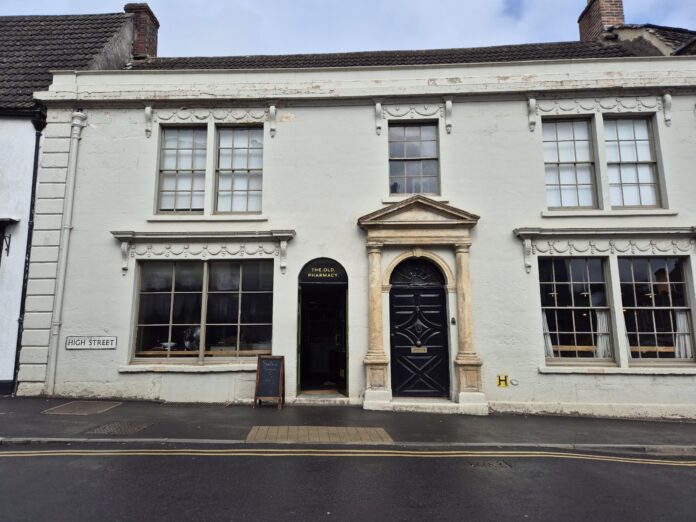When you are shopping for blinds, you suddenly realise just how many types there are to choose from. From roller and pleated blinds to gable end and allusion blinds, it is easy to get overwhelmed.
But rather than getting bogged down in terminology and flustered by the paradox of choice, let’s start by thinking about two of the most popular types of blinds out there for homeowners. Yep, today we’re talking about Venetian and vertical blinds.
Both of these options offer a host of benefits to the homeowner, giving shade, granting privacy and bestowing a touch of aesthetic intrigue, too. That said, each has their plus points and downsides, which we’re going to explore today; here’s how to choose between Venetian or vertical blinds for your home.
VENETIAN BLINDS
Venetian blinds are an incredibly popular choice with homeowners, primarily for the versatility of shade they offer, but also the range of styles which fall under the Venetian umbrella, meaning they’re suitable for a variety of interior design themes.
Venetian blinds consist of horizontal slats, which can be made from a variety of materials, including real and faux wood, as well as aluminium and vinyl. They offer a good amount of freedom when it comes to controlling light in your home; you can tilt the slats, as well as easily raise the blind completely – or have it any height required, for that matter – all using a cord.
This level of control and flexibility is perhaps the Venetian blind’s key appeal. As the experts at Smart Blinds tell us, ‘’This level of control is unique to Venetian blinds, so it’s not something you’ll find on other styles or designs’’.
They go on to say that ‘’The unique design of Venetian blinds gives you complete control over lighting, privacy and air flow’’. And who could argue with that?
Homeowners also value the privacy offered by venetian blinds. Tilting the slats can allow an almost ‘one way mirror’ effect, allowing you to see out but making it difficult for passers-by to see in. Creepy? Perhaps. But namely, this simply allows you to decide the level of privacy and light you want at any time.
It’s not all sweetness and meticulously controlled light, though. Since the slats on Venetian blinds are horizontal, there is some cleaning required, and they can get incredibly dusty if left to their own devices.
Aluminum slats, in particular, are also prone to damage and distortion, and bend easily. Choosing sturdier materials like wood tends to be a more worthwhile investment for your home; they tend to last for a good while longer. What’s more, wood is a particularly prudent choice since it is an insulating material. This means that it can actually help your energy bills during the cold winter months.
In small rooms, horizontal slats may even give the illusion of spaciousness, too.
VERTICAL BLINDS
Just as the name suggests, this type of blind has slats which hang vertically. The slats are often made from fabric, which makes it a lightweight but also an insulating blind.
One of the key advantages of vertical blinds is that they give the room an airy, light feel in summer; if you have a window wide open, you can enjoy a nice breeze whilst at the same time blocking out the glare from the sun. The material and design of vertical blinds allows you to enjoy a balance of privacy and natural light control in any given room.
They’re an adaptable option, too. Though you can use vertical blinds anywhere in your home, they make most sense when used for patio doors, floor to ceiling windows or window walls. This way, you can enjoy full coverage but still allow a little breeze and sunlight…everybody wins, hey?
You could use them for standard windows in, say, your living room or bedroom, too, but they tend to take up all of the space offered by a window sill. With smaller windows found in these rooms, vertical blinds may cover too comprehensive a part of the window, even when they’re pulled back. That said, they are good for creating the illusion of height. Decisions, decisions…
When it comes to maintenance, contrary to Venetian blinds, you don’t have to worry about dust. Since the slats are vertical, they don’t accumulate dust from the home. Dirt and stains from paws or fingerprints, however, is a major risk; if you have children or keep pets in the house, you should bear in mind that vertical blinds are made from easy-to-stain fabrics, and are soft to touch, making them attractive to dirty paws and fingers.
What’s more, and particularly applicable to pet owners, vertical blinds can, over time, accrue the odour of your animal. While a lot of the materials used for vertical blinds are machine washable, you don’t want to regularly take down your blinds to wash them. Check out these 7 hacks for keeping your house smelling good to mitigate this happening.
HOW CAN I DECIDE?
Venetian blinds and vertical blinds both make fantastic window dressings. Ultimately, it’s important to think about what type of windows you have, the size of those windows, and just how much privacy, coverage and sunlight allowance you’re after.
If you are looking to control privacy in the rooms of your home, Venetian blinds may be the best option for you, since you can tilt the slats to suit your needs. Alternatively, if you want to allow the maximum amount of light in, as well as a refreshing breeze in summer, vertical blinds are a better bet.
You also want to consider the design of the room and size of your window. Should you have a small window, you can create the illusion of space by choosing a venetian blind thanks to their horizontal slats. Alternatively, to create height, vertical blinds are ideal and are generally big enough window dressings for windows on the larger side.
When it comes to your budget, the type of blind you choose actually has less impact on the price than the material you choose. Generally speaking, vinyl and aluminium Venetian blinds are going to be more affordable than wood and some faux wood designs. That said, the latter represents a better investment, bringing with it longevity and durability. Vertical blinds, on the other hand, are made from fabric, which tends to make them more affordable. What’s more, broken vertical slats can be replaced easily.
And if you’re looking for more riveting discussion of blinds, their merits and their downsides, then check out these 5 top tips for finding the right blinds for your home.





